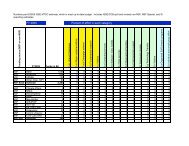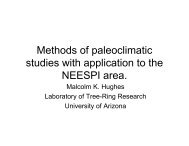Ground Truth Studies Teacher Handbook - Aspen Global Change ...
Ground Truth Studies Teacher Handbook - Aspen Global Change ...
Ground Truth Studies Teacher Handbook - Aspen Global Change ...
Create successful ePaper yourself
Turn your PDF publications into a flip-book with our unique Google optimized e-Paper software.
A <strong>Global</strong> <strong>Change</strong> Primer (continued)<br />
losses of 3 to 5% per decade appeared at mid-latitudes (closer to the equator). <strong>Global</strong> average ozone in 1992 was 2 to 3%<br />
lower than the lowest level previously observed, and 1993 measurements broke even those records.<br />
Ozone and life<br />
What does declining ozone mean for human beings or other forms of life? Less stratospheric ozone means more ultraviolet-B<br />
(UV-B) radiation and that means more sunburns, skin cancer, cataracts, and immune system deficiencies, other<br />
factors being equal. It is estimated that each 1% decline in ozone allows about 2% more UV radiation to reach Earth,<br />
and is thus projected to result in 4-6% more cases of the most common types of skin cancer. In 1991, the US Environmental<br />
Protection Agency estimated that over the next 50 years, about 12 million Americans (equal to the entire population<br />
of Florida) will develop skin cancer, and more than 200,000 of them will die from the disease (a 50% increase over<br />
the current death rate from skin cancer). Also, ozone depletion has continued to worsen, so if the EPA estimate is valid,<br />
the numbers would now be even higher. Having light skin coloring, living near the equator, and living at high altitude<br />
increases the risk of exposure to UV-B.<br />
New research strengthens the link between ozone depletion and increased ultraviolet-B (UV-B) radiation at Earth’s<br />
surface. UV-B is radiation from a portion of the ultraviolet spectrum (from 290 to 320 nanometers; a nanometer is a<br />
billionth of a meter) to which many living organisms appear to be especially sensitive. Researchers in Toronto, Canada<br />
measured UV-B levels at various wavelengths and found that at 300 nanometers (a wavelength at which ozone absorbs<br />
UV-B), the intensity of the radiation reaching Earth’s surface at the test site shot up, with summertime levels increasing<br />
by 7% per year and wintertime<br />
intensities increasing by 35% per<br />
year from 1989 to 1993. The<br />
summertime increases, though<br />
smaller in percentage, may prove<br />
even more damaging to humans<br />
and other living things as they are<br />
occurring at a time of year when<br />
UV-B is already at its highest<br />
levels in Canada and people are<br />
outdoors for longer periods of<br />
time.<br />
The Montreal Protocol<br />
Beginning in the 1980’s representatives<br />
from industry, the science<br />
community, governments got<br />
together under the auspices of the<br />
United Nations to address the<br />
Figure 8<br />
Chlorine loading of the stratosphere as modified by international agreements.<br />
Adapted from NASA Goddard Space Flight Center, WAL-144, January 1994.<br />
© ASPEN GLOBAL CHANGE INSTITUTE 1995 GROUND TRUTH STUDIES<br />
26



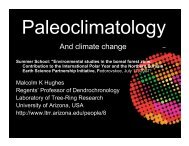


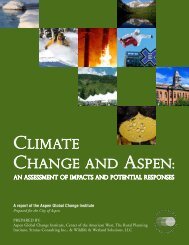

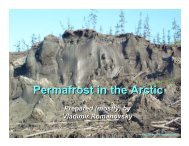
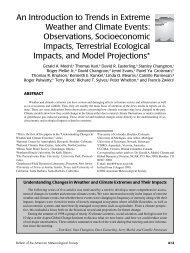
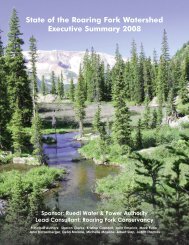
![View Powerpoint Slides [PDF]](https://img.yumpu.com/32486693/1/190x146/view-powerpoint-slides-pdf.jpg?quality=85)
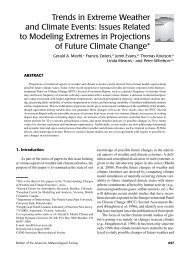

![View Powerpoint Slides [PDF]](https://img.yumpu.com/29411106/1/190x143/view-powerpoint-slides-pdf.jpg?quality=85)
